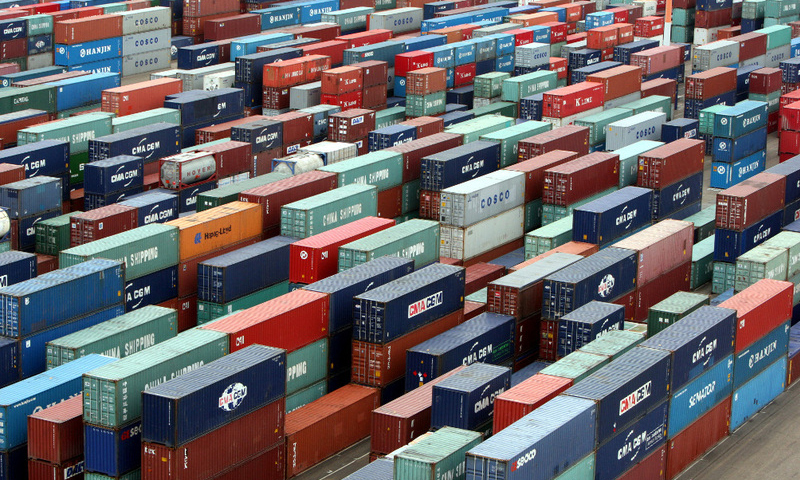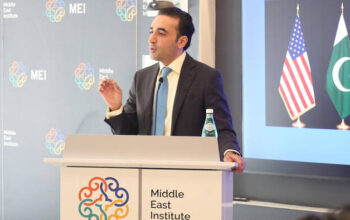While curbs on imports helped Dar declare victory by reporting current account surplus for the month of March, they threaten to bring the economy to a complete halt if continued into the next fiscal.
By Muhammad Ali
ISLAMABAD: Finance Minister Ishaq Dar is making much of the fact that Pakistan’s economy has been able to stay afloat on its external debt repayment in the last few months against all bets, but it is not lost on observers that this “achievement” has come at the price of putting the economy on a path to shutdown.
He is keen to highlight how Pakistan’s current account balance numbers for March came back positive, but independent voices point out that the rare surplus is the outcome of virtually closing the door on imports to squeeze the import bill.
Taking a holistic view of the situation, it is amply clear that the policy direction taken by Prime Minister Shahbaz Sharif’s economy czar’s efforts to troubleshoot the external sector have brought the domestic sector to a grinding halt, putting the economy into contraction.
If Dar’s peptalk is targeted at the markets in an effort to keep the sentiment upbeat, the attempt may already have failed: The rupee is in a tailspin. Stalling economic activity and the administrative curbs on hard currency outflows have created a yawning gap between the interbank and curb markets, driving forex transactions into the black market.
The worst part is that even after all this desolation, the prospect of default has not been lifted but merely delayed.
“The government’s patchwork policies achieves little beyond window-dressing”, a leading economic expert told Independent Pakistan. “None of this provides a permanent solution to Pakistan’s problems.”
Speaking on the condition of anonymity, the expert agreed that the current account deficit was turned into a surplus, but stressed it was done at the cost of choking economic growth.
“This is not an advisable path for a country with a population of close to 250 million out of which the majority consists of the youth population”, he said. “The crisis can trigger social upheaval, in which case this youth bulge will prove a liability rather than an asset for the country”.
All these developments clearly indicate that Pakistan is moving away from the path prescribed by the International Monetary Fund (IMF), which in turn means the prospects of the revival of the Fund’s EFF program are diminishing with every passing day.
Provisional economic data for the outgoing fiscal year published by the government last week clearly depicts the gravity of the situation. The provisional GDP growth rate of 0.29 percent for the fiscal 2022-23 clearly indicates contraction in real terms given the country’s population growth rate of around 2 percent.
This sharp decline from 6.1 percent revised GDP scored over the last fiscal is largely the result of import restrictions championed by Dar to curb current account deficit.
And this hardly reflects the full extent of the damage sustained by the economy by Dar’s myopic policies: In March alone, Large-Scale Manufacturing (LSM) contracted by a hefty 25 percent month-on-month.
Dar is making hopeful noises about the revival of the EFF program some time soon, but it is unclear what his optimism is based on. An official close to the government’s policy making said that without the IMF program, the curbs on imports are likely to continue into the new fiscal year. This dangerous policy direction threatens to bring the economy to a complete halt.
Foreign exchange reserves held by the State Bank of Pakistan (SBP) are likely to further diminish in the weeks because of foreign debt servicing requirements till the end of June 2023.
Pakistan is already in touch with Chinese authorities for the rollover of USD 2 billion in deposits falling due in June and July 2023. Then there is the USD 1.3 billion in Chinese commercial loans that Islamabad hopes will be refinanced – but have to be repaid first.
This is in addition to multilateral creditor’s repayments to the tune of USD 700 million due in June 2023.
These unavoidable forex outflows threaten to deplete the central bank’s foreign exchange reserves from around USD 4.2 billion now to less than USD 3 billion by the end of June 2023.
This cannot fail to put further pressure on the beleaguered rupee, sending the already roaring inflation into the stratosphere and adding to the common Pakistan’s burden of economic hardship.
This is a grim prospect, aggravated by the absence of a cogent roadmap to steer the country out of this mess.
Copyright © 2021 Independent Pakistan | All rights reserved




